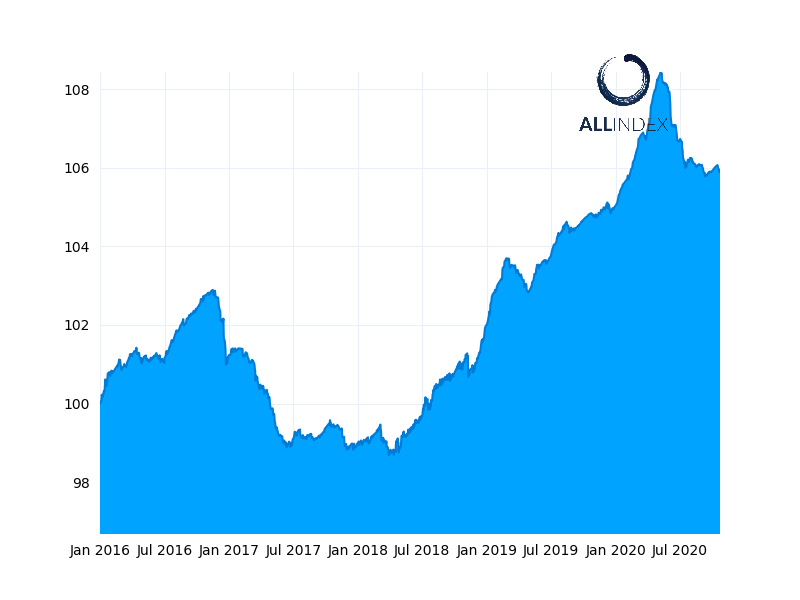(ATF) The ATF indexes inched up on Friday, all closing in positive territory ahead of the Fifth Plenum of the 19th Communist Party Congress when China’s leaders will shift their focus away from the country’s short-term economic performance to medium-term challenges.
Investors rejoicing at China’s post-Covid rebound, in contrast to the lagging economies of other major developed countries, should be wary of headwinds to growth in the longer-term, chief Asia economist at Capital Economics Mark Williams warned.
The ATF ALLINDEX Corporates, Financial and Local Governments sub-gauges rose 0.01%, and the ATF ALLINDEX Enterprise gained 0.02%. The benchmark China Bond 50 index closed the week 0.23% lower on the back of China’s GDP growth forecast miss on Monday, which disappointed markets but which continues unabated.
China posted accelerated economic growth in the third quarter of 2020, as well as a rebound in consumption indicating a broadening of its recovery. GDP for the period July to September expanded 4.9% in annual terms, following a 3.2% increase in the second quarter. Retail sales rose for the second consecutive month by 3.3% year-on-year from 0.5% in August.
“China’s recovery is remarkable, with GDP already back by Q3 to where it would have been without the virus,” said WIlliams. “However, I think it’s important that investors and analysts don’t forget all the major structural issues of China’s economy which were at the forefront of concerns before Covid-19. They haven’t gone away.”
Williams noted that the problems of misallocated capital, over-investment and bad debt are still very much present and warned that these issues will become headwinds to growth sooner than people are currently anticipating.
“People are still overestimating how quickly China will be able to grow in five-10 years’ time and that oversight has become greater because right now, relative to every other major economy, the short-term outlook for China is looking very strong,” he said. But he believes that China’s trend rate of economic growth will drop to about 2% by the end of this decade.
In contrast, the International Monetary Fund forecasts growth of 5% by 2025, and 4% by 2030.
Inherent contradiction, policy ironies
“If anything, the coronavirus makes this deceleration more likely because the response from Beijing has been another wave of investment-driven stimulus, which is leading to further misallocation of resources.
“This, in the long run, will further sap China’s growth potential.”
Williams pointed to greater state control and an increase in the share of credit flowing into the state sector coinciding with a sharp slowdown in productivity growth in the last decade, despite policymakers’ efforts to give markets a greater role.
“There is an inherent contradiction at the heart of a lot of China’s economic policies,” stated Williams. “The leadership says it wants to improve the allocation of resources but it is also actively steering resources into areas where it wants to build up capacity.”
One of the ironies is that the very policies that China hawks outside of China have worried about in terms of the country’s industrial policy, and state-led efforts to push Chinese companies into certain sectors, are actually those that are likely to substantially slow China’s growth over the next few years, added Williams.
“And the policies that China’s hawks have been trying to push China into adopting, in terms of opening up markets and liberalising, would probably lead China to grow faster in the future.”
























